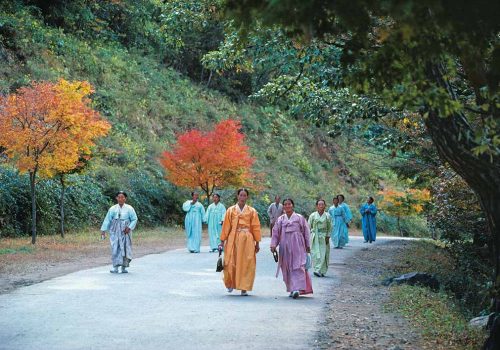Synonymous with the art of travel since 1854, Louis Vuitton keeps adding titles to its Fashion Eye series of photography books.
Each book evokes a city, a region or a country, seen through the eyes of a fashion photographer.
Silk Road by Kishin Shinoyama invites us to travel to new horizons.
From May 1981 to July 1982, Japanese photographer Kishin Shinoyama traveled the Silk Road. From Japan to the shores of the Bosphorus, the Louis Vuitton Editions narrate this adventure originally published by Editions Shūeisha. The book forms a philosophical whole, between a travel diary and the exercise of admiration.
The book Peregrinations: Landscapes between nature and history (Editions Hazan) is an essential point of support to understand the interaction of the photographer with the territories crossed during this journey. Pierre Wat describes the landscape as the production of an individual. “The landscape is something that must be bodily felt,” he writes. “The landscape is not nature. It exists only for the man and the latter seeks to register his own trace”. Kishin Shinoyama’s journey through Asia can be read as follows. Shinoyama sees travel as an active individual experience. In many ways, the photographer interacts with landscapes. He immerse himself in it and the trace is light on photosensitive paper.
At first glance, however, Shinoyama is just crossing through. But to cross a landscape is to risk seeing only its surface. Worse, for the reader the impression is of a bland travel notebook, where the cherry trees of Japan precede the spices of the souks. A sum of preconceived ideas, pretty photographs, impressions changed since by television documentaries. In short, the sound of an era. In this respect, the book Editions Vuitton make fun of the travel diary, a form that is somewhat used up today. By turning the pages, the reader could loosely see a sum of impressions. The open sky markets of Seoul, the Buddha sculptures of the Todda’-Ji temple or the Lanzhou railway. This book could be a more successful panorama than any another.
this would ignore the simplicity of the photographic gesture, and behind his gaze, the philosophy of the traveler on his way West.
“This trip was not an opportunity for me to observe new civilizations or to confirm my own knowledge. What mattered most was to transcribe what I felt, all senses together, fully immersing myself in each place. In the desert for example, I took off my shoes to feel the fine and powdery texture of the sand on the soles of my feet. I dipped my hands in the streams of the mountain to taste their freshness and I ate with the local, goat yogurt they had made themselves. A journey is to engrave each experience one by one in one’s body, in one’s soul. ”
With Shinoyama, the landscape is therefore “corporeal”. The landscape is a business of sweetness, where amazement coexists with the joy of discoveries. He is neither in a process of appropriation nor in a desire for renewal. Awakening, curiosity and apprehension feed his motives. He tastes food at every tables, smells the stinks of markets, he gets drunk . This is the peculiarity of the traveler. The landscapes he passes through are no longer those of others, but the landscapes of an individual. Shinoyama Road. Landscapes of the traveler. Two perceptions of the unique and already, this photographic paradox: the literal reality of the image is only the subjective reality of the photographer.
The uniqueness of this book is to have removed all informations. The images form an isolated figure, they do not communicate with any other structure. No text, no title. Texts and titles are rather carried over to the end. But like Shinoyama, the reader may not observe new civilizations (especially since they are no longer, forty years after, so new). On the other hand, one can find the photographer’s gesture and thus read the Silk Road as a jump from one landscape to another.
Arthur Dayras
https://us.louisvuitton.com/eng-us/lv-now/art-travel
















